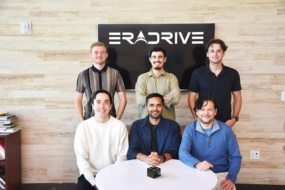Kall Morris, Inc. (KMI) has secured $5M in DoD contracts and private investment to further its technology development and commercialization efforts, the debris removal startup announced today.
The contracts secured include:
- A SpaceWERX STTR Phase II award of $1.5M for in-space grappling
- Another SpaceWERX STTR Phase II award of $1.5M, this one for secondary payload attachments
- A Department of the Air Force Direct-to-Phase II award of $1.25M to support development of the Laelaps spacecraft, which will eventually host the company’s debris removal technologies
The remaining $750,000 includes a closed pre-seed and seed round. The company has not disclosed its investors.
“As the DoD continues to develop vital In-Space Access, Mobility, and Logistics capabilities to continue ensuring the safe operation of US assets as well as the assets of our allies, KMI is working to exceed their expectations for operational excellence on our contracts now and as we build this network for contracts in the future,” KMI operations director Liza Fust told Payload via email.
Hold on tight: KMI is building a full stack of technology to address a growing debris problem in orbit, from its TumblEye debris characterization software program, to its REACCH adhesive grappling device, to the Laelaps spacecraft that will host it all.
Part of the vision is making the cost of removing debris from space more transparent. KMI recently partnered with Privateer to add the cost of removing defunct satellites or other debris to its Wayfinder space situational awareness platform.
Orbital Prime: The DoD is devoting significant resources to ensure that the space environment remains safe and operable far into the future, and removing debris is a part of that puzzle.
The Air Force launched Orbital Prime to encourage the development of active debris removal (ADR) technology, and companies like KMI that won early-stage contracts through the program are betting on the government’s need to procure ADR missions into the future.




